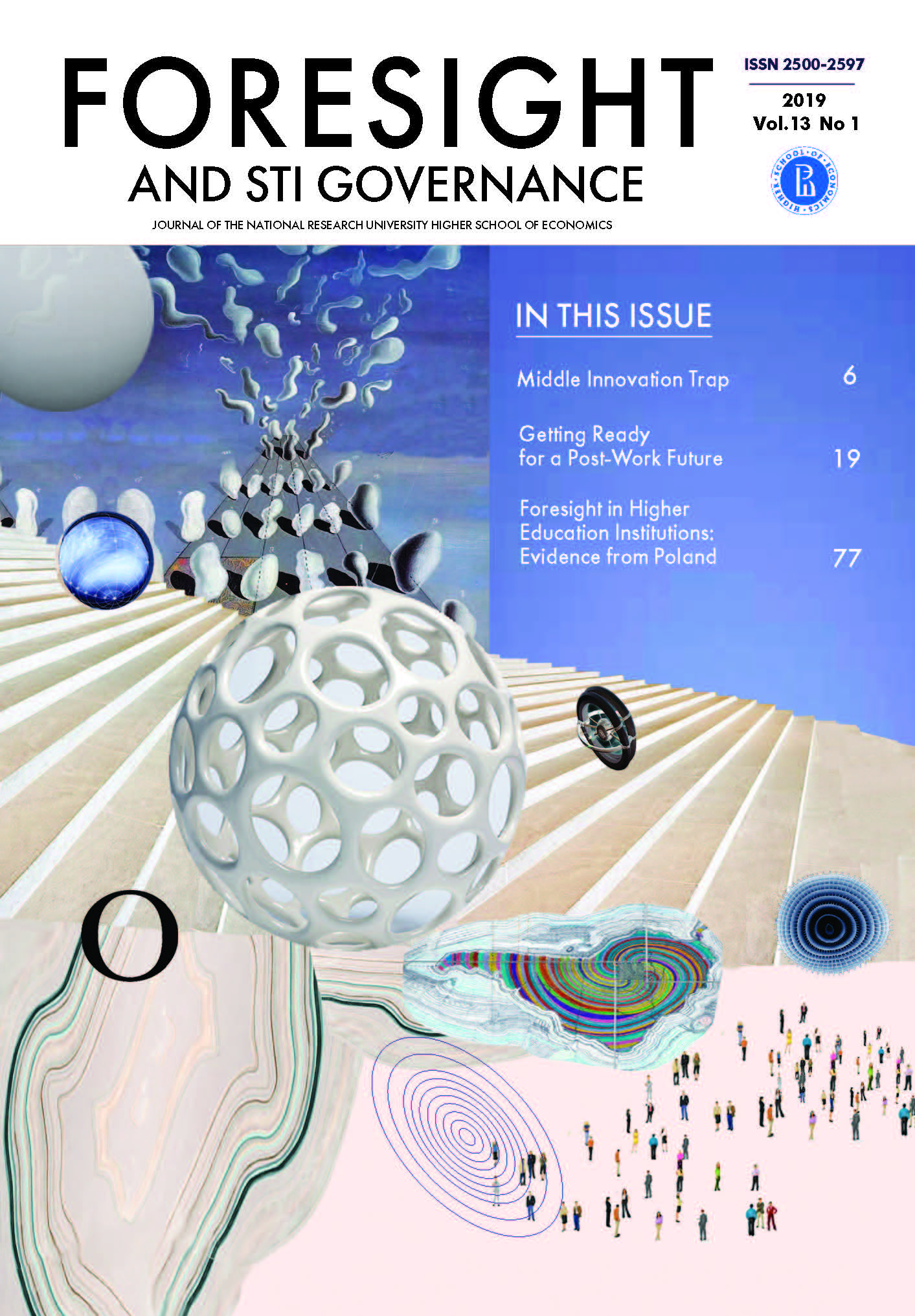Abstract
The article explores the relationship between economic development, technology, and energy consumption. It would be hard to imagine technological and social progress without the energy supply that fuels the growth of people’s well-being. Thanks to the “energy revolution” of the last century, a technological explosion became possible, including the development of an information society. The free supply of energy is the most important factor determining long-term trends in the development of the world economic system. At the same time, the author shows that at a certain stage of economic development, reserves of free energy resources begin to run low. The emergence of energy shortages is becoming probable, which can restrain further progress. The modern concepts of sustainable development are rightly singled out as one of the most important tasks for limiting the use of traditional, non-renewable energy resources. This is important not only in the ecological sense, but also economically. At the same time, the given concept pays special attention to renewable energy sources, the efficiency and volume of which can not yet be compared with the indicators for hydrocarbon use. The author believes that the very concept of sustainable development runs counter to the aims of humanity to maintain progress. Often, technologies that are designed to reduce the wasteful consumption of fossil fuels lead to additional costs. The author suggests that one objectively analyze the risks of implementing the concept of sustainable development and also warns against unfounded illusions and delusions that can plunge society into a prolonged state of stagnation and regression.
References
Allen R. (2009) The British Industrial Revolution in Global Perspective (New Approaches to Economic and Social History). Cambridge: Cambridge University Press. DOI: https://doi.org/10.1017/CBO9780511816680
Christensen C. (1997) The Innovator's Dilemma: When New Technologies Cause Great Firms to Fail. Boston, MA: Harvard Business Review Press.
Diamond J. (1997) Guns, Germs, and Steel. New York: W.W. Norton.
European Commission (2017) Study on the review of the list of critical raw materials. Brussels: European Commission. Режим доступа: http://ec.europa.eu/docsroom/documents/25421, дата обращения 15.06.2018.
Felter C. (2018) The cobalt boom // Council on Foreign Relations website, 15.06.2018. Режим доступа: https://www.cfr.org/backgrounder/cobalt-boom, дата обращения 07.07.2018.
Graeber D. (2015) The Utopia of Rules: On Technology, Stupidity, and the Secret Joys of Bureaucracy. New York, London: Melville House. ISBN: 978-1-61219-375-5
Graeber D. (2018) Bullshit jobs. New York: Simon & Shuster.
Herring H. (2006) Energy efficiency - a critical view // Energy. № 31. Р. 10-20.
Hilty L., Aebischer B. (eds.) (2015) ICT innovations for sustainability. Heidelberg, New York, Dordrecht, London: Springer.
IEA (n.d.) Energy technology RD&D: Tracking trends in spending on research, development and deployment. Режим доступа: http://www.iea.org/statistics/rdd/, дата обращения 07.07.2018.
Jevons W.S. (1865) Coal question. An inquiry concerning the progress of the nation, and the probable exhaustion of our coal-mines. London: Macmillan and Co.
Kurzweil R. (2004) The Law of Accelerating Returns // Alan Turing: Life and Legacy of a Great Thinker / Ed. C. Teuscher. Heidelberg, New York, Dordrecht, London: Springer. P. 381-416.
Lenton T.M., Pichler P., Weisz H. (2016) Revolutions in energy input and material cycling in Earth history and human history // Earth System Dynamics. № 7. P. 353-370.
Maddison A. (2001) The World Economy: A Millennial Perspective. Paris: OECD.
Malmodin J., Moberg A., Lunden D., Finnveden G., Lovehagen N. (2010) Greenhouse gas emissions and operational electricity use in the ICT and entertainment & media sectors // Journal of Industrial Ecology. Vol. 14. № 5. Р. 770-790. Режим доступа: https://onlinelibrary.wiley.com/doi/epdf/.x, дата обращения 17.02.2018. DOI: https://doi.org/10.1111/j.1530-9290.2010.00278
NSF (2018) National Science Board. Science & Engineering Indicators 2018. Alexandria, VA: National Science Foundation. Режим доступа: https://www.nsf.gov/statistics/2018/nsb20181/assets/nsb20181.pdf, дата обращения 07.07.2018.
Polimeni J.M., Mayumi K., Giampietro M., Ascott B. (2008) The Jevons Paradox and the Myth of Resource Efficiency Improvements. London: Earthscan.
Rubin A. (2004) How greater efficiency increases resource use. Paper presented to the North Central Sociological Association, April 2, Cleveland, Ohio.
Smil V. (1991) General Energetics Energy in the Biosphere and Civilization. New York: John Wiley.
Smil V. (2010) Energy Myths and Realities: Bringing Science to the Policy Debate. Washington, D.C.: AEI Press.
Souchon L., Aebischer B., Roturier J., Flipo F. (2007) Infrastructure of information society and its energy demand // European Council for an Energy Efficient Economy (ECEEE) Summer Studies Proceedings. P. 1215-1225. Режим доступа: https://www.eceee.org/library/conference_proceedings/eceee_Summer_Studies/2007/Panel_6/6.233/, дата обращения 26.04.2018.
Statista (2018) Change in OPEC crude oil prices since 1960. Режим доступа: https://www.statista.com/statistics/262858/change-in-opec-crude-oil-prices-since-1960/, дата обращения 07.07.2018.
Sullivan J.L., Burham A., Wang V. (2010) Energy-consumption and carbon-emission analysis of vehicle and component manufacturing. Lemont, IL: Argonne National Laboratory.
UN (2015) Transforming our world: The 2030 agenda for sustainable development. Geneva: United Nations. Режим доступа: https://sustainabledevelopment.un.org/post2015/transformingourworld/publication, дата обращения 15.01.2018.
USGS (2018) Mineral commodity summaries. Reston, Virginia: U.S. Geological Survey. Режим доступа: https://minerals.usgs.gov/minerals/pubs/mcs/2018/mcs2018.pdf, дата обращения 07.07.2018.
University of Oxford (n.d.) Our World in Data. Режим доступа: https://ourworldindata.org/economic-growth, дата обращения 07.07.2018.
WEF (2017) Tesla’s electric truck ‘needs the energy of 4000 homes to recharge’, say reserahers. Режим доступа: https://www.weforum.org/agenda/2017/12/tesla-s-electric-truck-needs-the-energy-of-4-000-homes-to-recharge-say-researchers/, дата обращения 09.05.2018.
Миловидов В.Д. (2015a) Управление инновационным процессом: как эффективно использовать информацию // Нефтяное хозяйство. № 6. С. 10-16.
Миловидов В.Д. (2015b) Управление рисками в условиях асимметрии информации: отличай отличимое // Мировая экономика и международные отношения. Т. 59. № 8. С. 14-24.
Миловидов В.Д. (2015c) Проактивное управление инновациями: составление карты знаний // Нефтяное хозяйство. № 8. С. 16-21.
Миловидов В.Д. (2017) Информационная асимметрия и «большие данные»: грядет ли пересмотр парадигмы финансового рынка? // Мировая экономика и международные отношения. Т. 61. № 3. С. 5-14.
Миловидов В.Д. (2018) Услышать шум волны: что мешает предвидеть инновации? // Форсайт. Т. 12. № 1. С. 88-97.

This work is licensed under a Creative Commons Attribution 4.0 International License.

